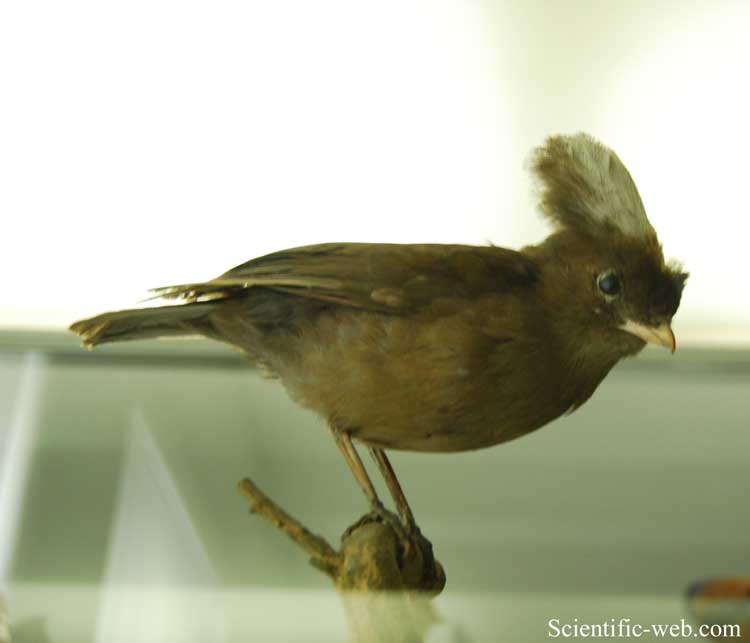
Amblyornis inornata, Photo: Michael Lahanas
Superregnum: Eukaryota
Cladus: Unikonta
Cladus: Opisthokonta
Cladus: Holozoa
Regnum: Animalia
Subregnum: Eumetazoa
Cladus: Bilateria
Cladus: Nephrozoa
Superphylum: Deuterostomia
Phylum: Chordata
Subphylum: Vertebrata
Infraphylum: Gnathostomata
Megaclassis: Osteichthyes
Cladus: Sarcopterygii
Cladus: Rhipidistia
Cladus: Tetrapodomorpha
Cladus: Eotetrapodiformes
Cladus: Elpistostegalia
Superclassis: Tetrapoda
Cladus: Reptiliomorpha
Cladus: Amniota
Classis: Reptilia
Cladus: Eureptilia
Cladus: Romeriida
Subclassis: Diapsida
Cladus: Sauria
Infraclassis: Archosauromorpha
Cladus: Crurotarsi
Divisio: Archosauria
Cladus: Avemetatarsalia
Cladus: Ornithodira
Subtaxon: Dinosauromorpha
Cladus: Dinosauriformes
Cladus: Dracohors
Cladus: Dinosauria
Ordo: Saurischia
Cladus: Eusaurischia
Subordo: Theropoda
Cladus: Neotheropoda
Cladus: Averostra
Cladus: Tetanurae
Cladus: Avetheropoda
Cladus: Coelurosauria
Cladus: Tyrannoraptora
Cladus: Maniraptoromorpha
Cladus: Maniraptoriformes
Cladus: Maniraptora
Cladus: Pennaraptora
Cladus: Paraves
Cladus: Eumaniraptora
Cladus: Avialae
Infraclassis: Aves
Cladus: Euavialae
Cladus: Avebrevicauda
Cladus: Pygostylia
Cladus: Ornithothoraces
Cladus: Ornithuromorpha
Cladus: Carinatae
Parvclassis: Neornithes
Cohors: Neognathae
Cladus: Neoaves
Cladus: Telluraves
Cladus: Australaves
Ordo: Passeriformes
Subordo: Passeri
Infraordo: Corvida
Superfamilia: Menuroidea
Familia: Ptilonorhynchidae
Genus: Amblyornis
Species: Amblyornis inornata
Name
Amblyornis inornata (Schlegel, 1871)
Synonyms
Amblyornis inornatus
References
Nederlandsch Tijdschrift voor De Dierkunde 4 p. 51
Vernacular names
English: Vogelkop Bowerbird
suomi: Majalavastaja
The Vogelkop bowerbird (Amblyornis inornata), also known as the Vogelkop gardener bowerbird, is a medium-sized, bowerbird of the mountains of West Papua (New Guinea).
Description
The birds are about 21–35 cm in length, with the females being slightly smaller. They are mainly olive brown in colour, though somewhat paler below, without ornamental plumage. This makes the species one of the dullest-coloured members of the bowerbird family with, however, one of the largest and most elaborate bowers.
Bower
The bower is a cone-shaped hut-like structure some 100 cm high and 160 cm in diameter, with an entrance usually propped up by two column-like sticks. A front "lawn" of some square meters area is cleaned of debris and laid out with moss. On this, and in the entrance of the bower, decorations such as colourful flowers or fruit, shining beetle elytra, dead leaves and other conspicuous objects are collected and artistically arranged.
Males go to great lengths to ensure that their displays are in prime condition, replacing old items as needed, as well as trying to outdo their neighbours by finding more spectacular decorations, and arranging them appropriately. As opposed to other species of bowerbirds, such as the satin bowerbird, there is no fixed preference for items of a certain colour, more important being the "novelty value" of the items instead, which can lead to fashion-like trends if males find rare or unusual items; such rare finds are prime targets for theft by neighboring males. Females visit bowers and, depending on whether they like the "treasure trove" on display, will mate with the attendant males. The bower, indeed the male, play no part in nesting and raising the young.
The songs and mimicry skill of this bird are well known among the indigenous peoples. In September 1872, Odoardo Beccari became the first naturalist to see the home grounds of this bowerbird in the Arfak Mountains of Irian Jaya.
Because of its unadorned and plain plumage, this bowerbird is relatively safe from persecution. A common species within its limited habitat range, the Vogelkop bowerbird is evaluated as Least Concern on the IUCN Red List of Threatened Species.
References
BirdLife International (2018). "Amblyornis inornata". IUCN Red List of Threatened Species. 2018: e.T22703644A130219341. doi:10.2305/IUCN.UK.2018-2.RLTS.T22703644A130219341.en. Retrieved 13 November 2021.
Retrieved from "http://en.wikipedia.org/"
All text is available under the terms of the GNU Free Documentation License

